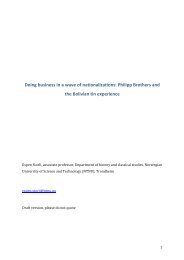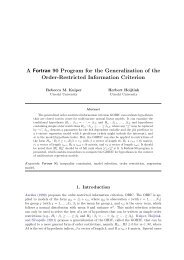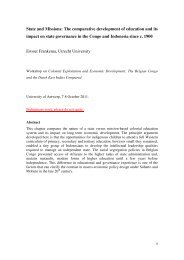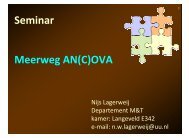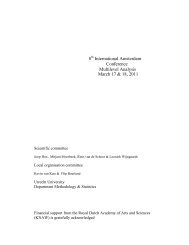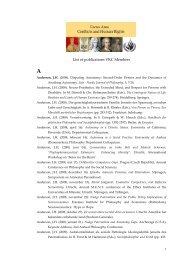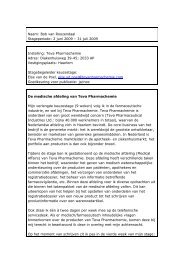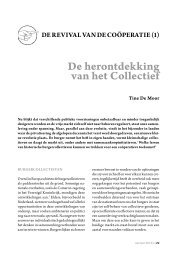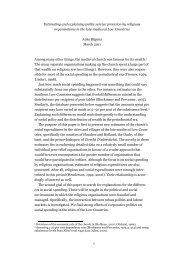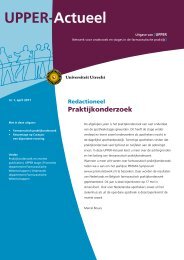New Approaches to Medieval Communication?1
New Approaches to Medieval Communication?1
New Approaches to Medieval Communication?1
Create successful ePaper yourself
Turn your PDF publications into a flip-book with our unique Google optimized e-Paper software.
20 MARCO MOSTERTtake in<strong>to</strong> account not only commonly known facts about the period, but alsomuch that is common <strong>to</strong> all human communication. However, a summarymight be helpful of questions which might in principle be asked about anycommunicative behaviour encountered in medieval sources. This summaryshould obviously not be confused with a full-fledged methodology or researchstrategy. 19 With this proviso, the main variables in early medieval communicativebehaviour seem <strong>to</strong> be the following: 201 Who are represented by the ‘senders’?1. supernatural beings: God; Christ; the Virgin Mary; angels; devilsand demons; saints deceased; the souls of the deceased. 2. human beings,divided in<strong>to</strong> 2.1 non-christians: Jews, muslims; and 2.2 christians,divided in<strong>to</strong> 2.2.1 clergy: secular clergy; regular clergy and 2.2.2non-clergy: king; higher aris<strong>to</strong>cracy; lower aris<strong>to</strong>cracy; urban patricians;other <strong>to</strong>wn dwellers; agrarian population.2 Which is the sender’s sex?male; female; none.3 Which is the sender’s age?child; adolescent; grown-up; elderly; none.4 Which forms of communication can be distinguished?attitudes; gestures; physical contact; visual signs; olfac<strong>to</strong>ry signs; flavours;auditive, non-verbal signs; speech acts; writing as author; reproducingwritten texts; reading aloud; reading silently; listening; commenting;a combination.5 What is the subject of the message?concerning the social function of the sender; concerning training oreducation for a social role; concerning the image the social group ofthe sender has of itself and others; concerning social organization (normativeand sanctioning; concerning government or management; concerningthe relations with the supernatural; magical; concerning theorganization of communication; a combination.6 Who is represented by the ‘receivers’?19Other important questions may have <strong>to</strong> be included, e.g. where does the ‘sender’ or‘receiver’ come from? What is the esteem for ‘sender’, ‘receiver’, or message? Is the messageserious or jocular? Is it meant <strong>to</strong> convey truth or fiction? etc.20Unfortunately, it is not possible <strong>to</strong> apply these questions quantitatively <strong>to</strong> medievaldocuments. The results would prove misleading, as the data are not suitable. Social groups aredifficult <strong>to</strong> identify, a person’s age is hardly ever known, etc. Qualitatively, these questions canbe answered only when we address the difficult task of trying <strong>to</strong> establish standardizeddescriptive criteria.



